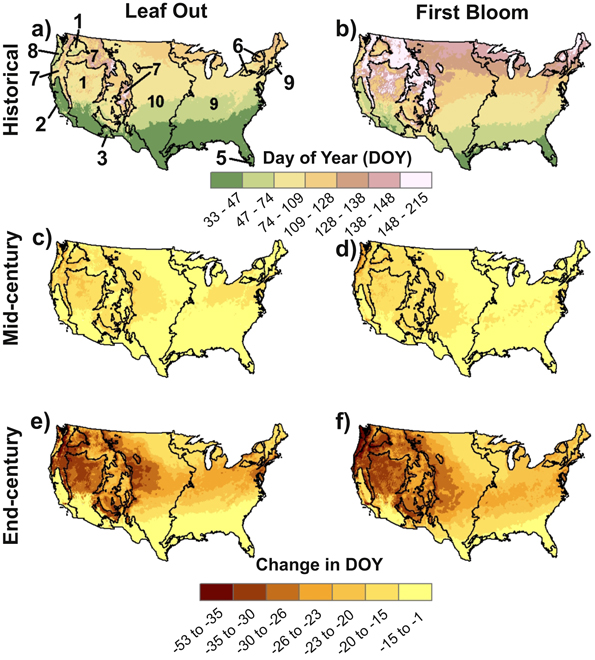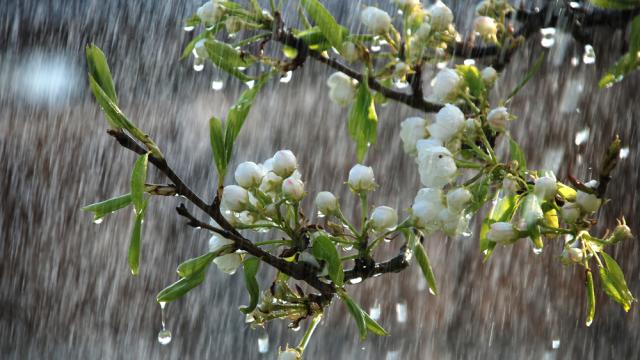Something odd is happening to the seasons in America. Spring has been showing up progressively earlier, and a new model shows that by the end of the century, it will likely be showing up a full 23 days earlier — but it may not look quite like the Spring right now.
A new study in Environmental Research Letters looks at two traditional markers of Spring — “leaf out” (when the leaves first pop up) and “first bloom” (just like it sounds — and what our progressively warming climate is doing to the date. They looked at data beginning in 1950, and then projected out what the next century would look like. The median shift was 23 days, but something else funny started happening — Spring got a whole more erratic.

In part, this was because the shift wasn’t consistent. Some places got a considerably earlier start than the 23 day median and others quite a bit later. But also, this shift to an earlier date also came with the potential for “false Springs” — a temporary warm-up, followed by a freeze — to show up earlier too, and this is a problem for plants, particularly those who have little defence against freezing in their earliest stages.
An even bigger problem, though, may be that while the plants think spring has come, the insect and animal world (on which it depends for pollination) might not be in lockstep agreement. In fact, animals are already responding to climate change’s shifting seasons in unpredictable ways:
Long-distance migratory birds respond to cues present in their overwintering habitat, such as day length, while plants in their summer breeding grounds respond to local environmental cues like temperature. Birds that have adapted to migrate earlier have maintained their population levels, while birds that retained historical temporal patterns in migrations have declined, at least in part due to phenological mismatches with plant-based resources (Saino et al 2011, Clausen and Clausen 2013). Increasing temperatures have led to poor synchronisation between moth emergence and leaf out of host trees (Visser and Holleman 2001). Ultimately, the ability of a species to respond to rapid phenological changes will depend upon generation time, levels of genetic variability, and the plasticity of phenological and behavioural traits
In other words, yes, Spring is coming — and it’s coming earlier, but it might not be the Spring expected.
Top image: Sundraw Photography / shutterstock.
